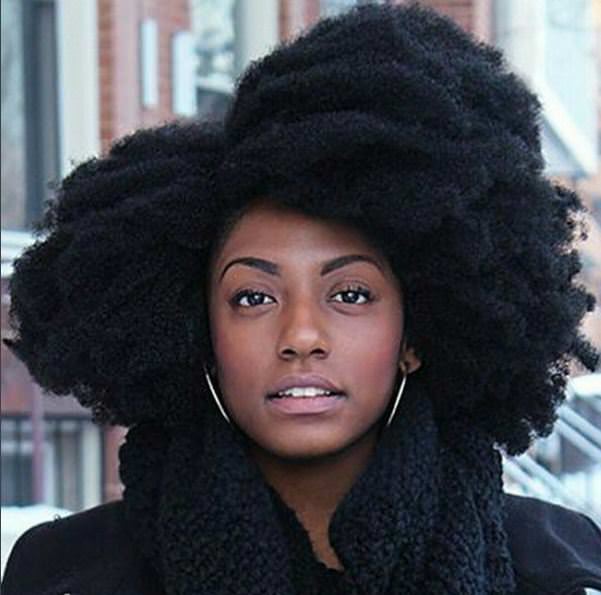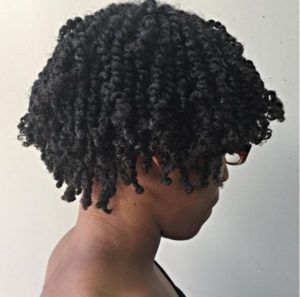4 Ways To Stretch Your Hair Without Heat During The Cold Dry Season
 Now that winter is upon us, I’ve become even more reluctant to put a blow dryer* near my head, let alone a flat iron*. There are many different things that you can do to reduce damage and dryness, but at this point I’m taking no chances.
Now that winter is upon us, I’ve become even more reluctant to put a blow dryer* near my head, let alone a flat iron*. There are many different things that you can do to reduce damage and dryness, but at this point I’m taking no chances.
I haven’t had to endure a harsh winter for quite a while so I’m not exactly sure how my hair will react to the cold, dry, weather.
Although I’ve already put away my blow dryer* and flat iron* for the next few months that doesn’t necessarily mean that I’m ready to give up my stretched hairstyles.
For me, stretching my hair isn’t just about showing length, it’s about preserving my hair and making sure that it doesn’t get tangled.
Want stretched hair without a blow dryer*? You’re definitely not alone. So how do you stretch your hair without heat? Below I have 4 ways to stretch your hair without heat during the cold dry season:
African Threading
The simplest way to explain this is that you take weaving thread or crochet thread, and wound it down the length of your hair while you keep your hair pulled straight with your other hand. Be sure you keep the hair as smooth as possible.
When using this method to stretch your hair remember not to apply too much tension to your hair. While you do want to make sure that the thread is securely wrapped around the base of each section of hair, your head should not hurt after the application.
What I love about this method is that it’s fairly easy, it can be done on wet hair, and it stretches my hair out to about 70% of its actual length.
All you need to do is section your hair off into fairly small portions, secure the thread to the base of your hair by wrapping it around itself a few times and continue down the length of your hair and secure it.
To secure the thread sometimes I braid it into my hair at the ends or I tie it at the bottom. It’s definitely something that you can do on your own, but extra hands are always helpful.
 Twists and Braids
Twists and Braids
If African threading isn’t for you, maybe twisting or braiding your hair is a better option. If you don’t have anyone to help you secure thread to your hair you can simply section your hair into manageable parts, detangle, and either twist, plait, or cornrow your hair and allow enough time for it to dry completely.
Depending on what style you plan on doing with your hair, you might choose to add in products to set the pattern of your twist or braid.
Bantu Knots
If you’ve never heard of this particular style, just imagine your head covered with a bunch of little buns. Bantu knots are done by taking a section of your hair, detangling it and wounding it until it starts to bend on itself and form a little bun.
Tuck the ends of your hair under the knot to secure it, or use a hairpin to keep it from unraveling. While this is a good way to stretch hair, it does form rather tight curls depending on the products you use. In most cases, after a day or two the curls will stretch out on their own.
Wrapping It
I used to wrap my hair when I had a relaxer, but I never thought it would be something that I would do as a natural. I haven’t tried this method as yet, but it might be worth a shot. Using this method, you pull your hair around your head and secure it with bobby pins*. The tension should keep your curls elongated during the drying process.
When stretching your hair keep in mind that you probably won’t end up looking like you just got your hair pressed. Your hair will not be laid. The results should however elongate your hair, help reduce tangling, manipulation, and breakage.
Remember to moisturize your hair as usual, and always leave enough time for your hair to dry completely to get the best results.
Quick protective tips to remember
1. Try to use shampoo less frequently and incorporate more co-washes.
2. If this isn’t already a part of your normal routine, try pampering your hair with a good deep conditioning* treatment. Try whipping up a homemade recipe or buy a treatment from a local store.
3. Moisturize and seal your hair on a regular basis, making sure to concentrate on your ends.
4. Protect your ends. This can be done by wearing buns, braids, and weave, but also pay attention to the fabrics from scarves and jackets that come in contact with your hair.
How do you stretch your hair during the cold dry season?

